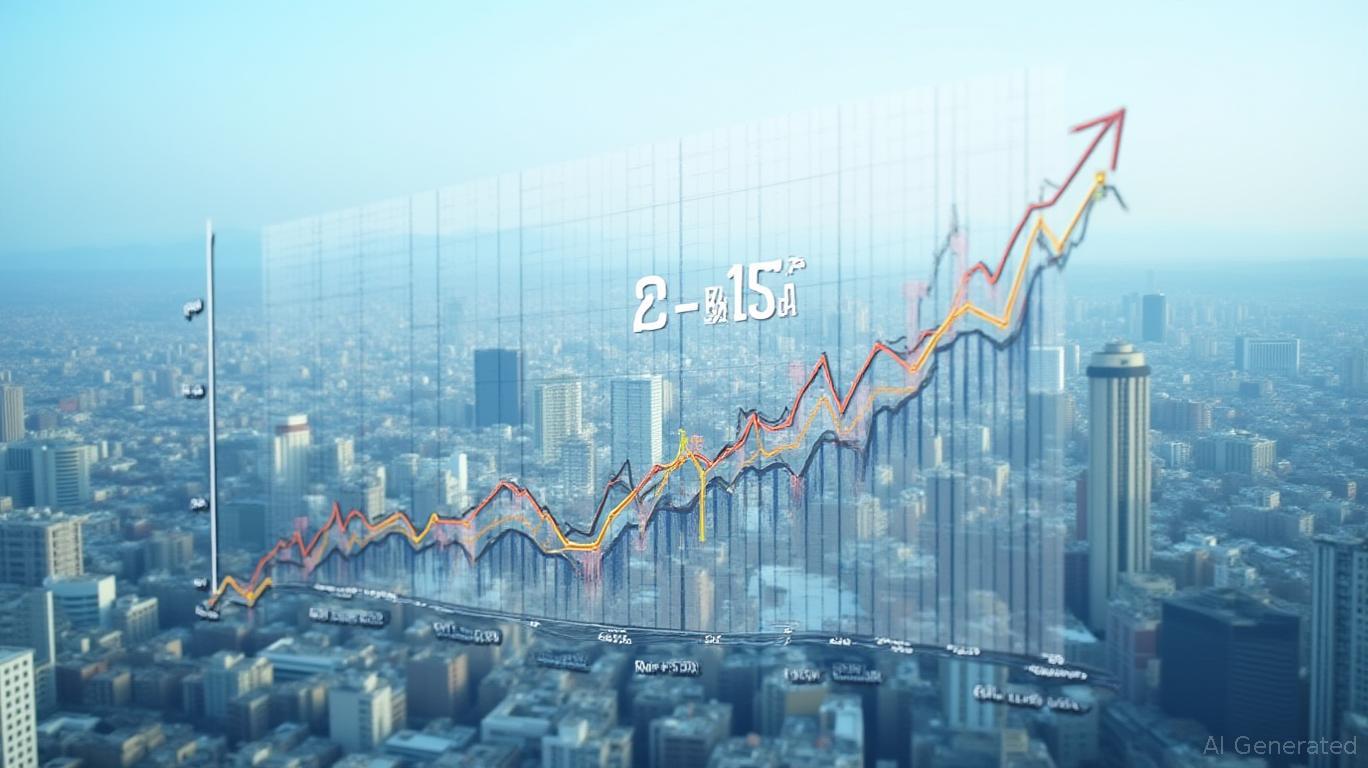Ukraine's IMF Milestone: A Fragile Path to Recovery Amid Geopolitical Storms
The International Monetary Fund's approval of Ukraine's Eighth Review on May 29, 2025, marks a critical juncture for the war-torn nation's economic survival. The $500 million disbursement, part of a $15.5 billion Extended Fund Facility (EFF), underscores Kyiv's progress in meeting IMF conditions. Yet this milestone is overshadowed by the unresolved Russia-Ukraine conflict, persistent inflation, and the geopolitical chess match over Ukraine's post-war future. For investors, the question is stark: Does this tranche approval signal a turning point for macroeconomic stability, or is it merely a temporary lifeline in a prolonged crisis?

The IMF's Conditional Lifeline: Progress Amid Stresses
The Eighth Review's approval hinges on Ukraine's adherence to quantitative performance criteria and structural reforms. Key achievements include meeting end-March fiscal targets and submitting draft amendments to tax reporting rules for digital platforms. However, the IMF highlighted critical gaps, such as the delayed appointment of a permanent head of the State Customs Service—a reform essential to curbing corruption and improving revenue collection.
The fund's conditions are not merely bureaucratic boxes to tick. They are a lifeline for Ukraine's fiscal sustainability. With public debt at 70% of GDP and wartime expenditures absorbing 15% of GDP annually, the IMF's funding is a stopgap until Kyiv can boost domestic revenue. The National Revenue Strategy (NRS), which aims to expand the tax base and combat evasion, is central to this effort. Without progress here, Ukraine risks a fiscal cliff post-2025, even with external support.
Structural Reforms: A Double-Edged Sword
Ukraine's reforms are a masterclass in balancing pragmatism with idealism. The IMF's push for judicial independence, anti-corruption institutional strengthening, and public investment management (PIM) frameworks is laudable. For instance, the planned overhaul of the State Customs Service could reduce smuggling and boost state revenues by $1 billion annually—a win for both fiscal credibility and investor confidence.
Yet reforms carry political costs. The appointment of a customs chief, delayed due to partisan bickering, exemplifies how domestic politics can undermine progress. Similarly, the National Anti-Corruption Bureau's (NABU) audit report, while published, has yet to translate into tangible prosecutions. Without visible outcomes, public trust—and international patience—will erode.
Geopolitical Risks: The Shadow Over Capital Flows
The war's persistence remains the single largest risk to Ukraine's economic stability. The IMF's program, the first ever for a country in active conflict, operates under the assumption that external financing (including the G7's European Reconstruction Agency) will plug gaps. But what if the war escalates?
The May 2025 U.S.-Ukraine Reconstruction Investment Fund (RIF) agreement, designed to attract $50 billion in private capital for critical minerals and infrastructure, offers a glimmer of hope. The RIF's focus on lithium, graphite, and rare earth elements—strategic assets vital to global supply chains—could position Ukraine as a geopolitical linchpin. However, the deal's preferential terms for U.S. investors over EU competitors risk fracturing Western unity. A divided donor base could stifle the fund's success.
The Investment Case: Riding the Roller Coaster
For investors, Ukraine is a high-risk, high-reward proposition. The RIF's potential to unlock $50 billion in capital—and the IMF's $10.65 billion already disbursed—creates a foundation for rebuilding. Sectors like energy, infrastructure, and technology (leveraging Ukraine's tech talent) offer growth avenues. The $46.7 billion in gross reserves (as of April 2025) also provide a buffer against external shocks.
Yet caution is warranted. Cyberattacks, energy shortages, and the possibility of a Russian escalation remain existential threats. The IMF's program requires Ukraine to raise its policy rate to 25% to curb inflation—a move that could stifle private-sector growth. Meanwhile, the U.S.-EU rivalry over resource access could derail the RIF's initial optimism.
Conclusion: A Fragile Dawn
Ukraine's IMF tranche approval is a victory, but its economy remains tethered to geopolitical winds and domestic reform execution. For investors, the calculus is this: The country offers a rare chance to back a post-war reconstruction boom in a region of strategic importance. The RIF and IMF's support provide scaffolding, but the real test lies in whether Kyiv can transform political will into economic stability.
The July 2025 Ukraine Recovery Conference (URC2025) will be a litmus test. If global investors and governments commit tangible resources, Ukraine could emerge as a phoenix. If not, the IMF's lifeline may prove insufficient against the storms of war and fiscal fragility. For the bold investor, Ukraine's risks are matched by its potential—a bet on resilience in a fractured world.
Act now, but tread carefully. The stakes have never been higher.

Comments
No comments yet